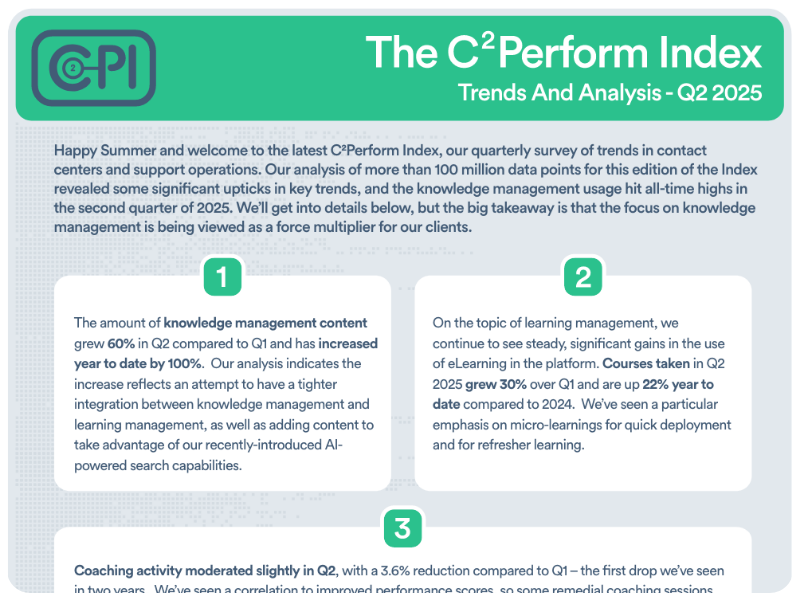Employee engagement is a critical driver of productivity and success—which may be why 71% of executives say that employee engagement is critical to their company’s success (Source: Haiilo). Employee recognition—the act of acknowledging and praising an employee for their work or for notable achievements at work—can be a key strategy for driving employee engagement and encouraging others in the workplace to emulate the behaviors/actions that led to the praise.
What are the benefits of employee recognition programs? What are some simple employee recognition ideas you can use to kickstart your own program? What kind of tools do you need to make recognizing great work easier and more consistent?
Read on to find out!
Why Employee Recognition Programs Matter
Some specific benefits of employee recognition programs and reasons to formalize employee recognition as a process in your business include:
1. Making More Employees Feel That Their Work Matters
Employee rewards and recognition factor heavily into employee engagement—which affects productivity, retention, and quality of work across the whole team. According to Zippia, “60% of employees feel recognized at work. Of these, 15% say they’re recognized almost frequently enough, 42% say they’re recognized just the right amount, and 3% say they’re recognized too frequently.” The remaining 40% of employees don’t feel like their work is recognized at all by their employers.
This means that 40% of the workforce is left without a feeling that their work really matters to their employers. After all, if they’re meeting expectations, but aren’t getting acknowledged for it, they may assume that their leaders don’t care about the work they put in.
By formalizing employee recognition and tracking who’s getting recognized, employee progress towards goals, and major milestones, you can spread out your recognition more evenly and consistently—helping ensure that all of your employees feel like their efforts are valuable.
2. Encouraging Employees to Emulate Success-Oriented Behaviors
Publicly recognizing employees who earn significant achievements can be a great way to motivate both them and their peers to emulate their efforts to get similar recognition.
For example, say that Jerry is a call center manager overseeing a team of agents that have been struggling to meet their goals for a while. After he made a few changes to the team’s processes and helped clear a few roadblocks for them, one of Jerry’s agents didn’t just meet the goals the company had set—he crushed them. This agent, let’s call him Tom, was one of the few in the call center to openly embrace the changes and follow the new standard operating procedures (SOP) document to the letter.
Jerry takes some time during the next meeting to not only publicly recognize Tom’s work, but to ask him to share how he managed to beat the goals. Tom tells the team how he used the new SOPs and the way the revised procedures made his work easier. During the next assessment period, more of the team starts following Tom’s example and they start meeting more of their goals, too. Jerry takes some time to congratulate each of them for their work in front of the team and even holds a little celebration for the whole group.
Over time, more agents adopt the new SOPs and the team’s overall success starts to build.
3. Helping Reduce Employee Turnover
Employee retention is a critical concern for any business. Estimates on the cost of turnover vary depending on the role and the industry, but Gallup states that the total cost of turnover to American businesses is $1 trillion per year. This can include costs like reduced productivity, marketing the job opening to attract new hires, training them, and onboarding them so they have the resources needed to perform the job.
One thing that can contribute to high employee churn is the feeling of being unappreciated and that their management doesn’t care about their work or them as people. This can be a major factor in driving dissatisfaction with work and make it easier for employees to emotionally check out—which can quickly lead to people physically leaving.
Employee recognition programs help solve this problem by making employees feel appreciated and welcome in their role. This encourages them to stay with the company so they aren’t as likely to leave on their own.
4. Creating Stronger Bonds between Managers and Teams
Not every benefit of an employee recognition program is about efficiency, productivity, and cost savings. One of the less easily-measured benefits of having an employee recognition program is that it can help foster a deeper sense of camaraderie between leaders and their teams.
For example, say that there are two team leads in competing business units. We’ll call them Richard and Janice. Richard doesn’t really interact with his team much outside of meetings or coaching sessions—he isn’t actively avoiding them, but he doesn’t want to bother them during work or be overbearing. So, he doesn’t go out of his way to talk to them even when they’re doing great work. When the company introduces a new tool and process for recognizing employee work, he doesn’t change much.
Meanwhile, Janice is more of an extrovert. She likes to check in with employees and get progress updates. She also likes to send out special “thank you” messages whenever she sees someone do an especially good job or hit a really big milestone. So, when her company introduces a new tool for tracking employee progress and communicating with them, she jumps into it wholeheartedly.
As time goes on, Richard’s team start to feel more and more disconnected from their leader. They don’t feel that he’s all that invested in their well-being—even though he’s working hard behind the scenes to remove obstacles and keep work from being overwhelming. The lack of communication impacts the morale of his team. Performance doesn’t suffer too much, but it doesn’t really improve either and his staff start looking for new opportunities elsewhere.
Meanwhile, Janice starts really highlighting employee successes during meetings, in department emails, and even in face-to-face interactions with her team. Every time she gets a notification that an employee met some major milestone or exceeded their performance goals, she makes a note to congratulate them and even put them in for a raise if they trigger a certain number of notifications in a quarter. At first, the team’s a little overwhelmed at the positivity, but they feel that Janice cares about them and their wellbeing—and the raises don’t hurt, either.
When the team has an issue or needs support, they’re more open about it with Janice and she can work to more proactively resolve any problems. In the end, she helps her team resolve a lot of issues and creates a workplace where everyone can excel and feel comfortable with their work. This also helps to further reduce turnover for her team.
Employee Recognition Ideas You Can Use
Just for the benefits of potentially reducing churn and improving employee productivity, an employee recognition program can be well worth setting up. But, how can you put that policy into practice?
Some ways you can recognize employees include:
- Adding an “Employee of the Week/Month” Segment to Team Meetings. Here’s a simple way to recognize an employee’s extraordinary efforts easily: add a section to team meetings where you congratulate an employee and name them “employee of the week” (or month, depending on meeting frequency). It’s a quick and easy way to publicly recognize top performers that doesn’t cost you more than a minute or two of time on a meeting.
- Incentivizing Consistent Top Achievers. Is there a member of the team who consistently qualifies for kudos more often than others? Consider tracking how many times employees earn recognition and using that to provide bonuses and other rewards (such as extra vacation days, gift cards, or plaques). This helps to incentivize consistent performance and motivate employees.
- Sharing Congratulations on Social Media or Team Communication Apps. Does your team use social media or have a dedicated intra-team communication app? Try sharing your congrats with team members on these platforms. This helps you quickly provide public recognition for your employee’s hard work in a space where everyone can see it.
- Spreading Out Recognition as Much as Possible. If there are only ever a few employees who earn recognition for their work, it could become a problem for team morale. This can create the impression of favoritism—even though recognition is being honestly earned—and cause those not getting recognized to become disengaged or jealous. Spreading out the recognition by recognizing different milestones and tracking who hasn’t been given an award in a while can help you keep more of your team feeling motivated and engaged.
- Creating a Public “Leaderboard” for Employee Goals. If you have a data dashboard tool, consider posting a live feed to it somewhere in the office or giving employees access to a “leaderboard” view online. This gamification strategy helps to encourage competition and drives employees to work harder to reach the top of the board.
Get the Tools You Need
Need help tracking which employees are most deserving of recognition and actually communicating your congratulations to them? Get the tools you need from C2Perform! Our comprehensive suite of tools combines performance tracking, data dashboards, employee communications, and engagement tools into a single cohesive whole—helping make employee recognition easier than ever!
Schedule a demo today to get started!

 English
English Español
Español










